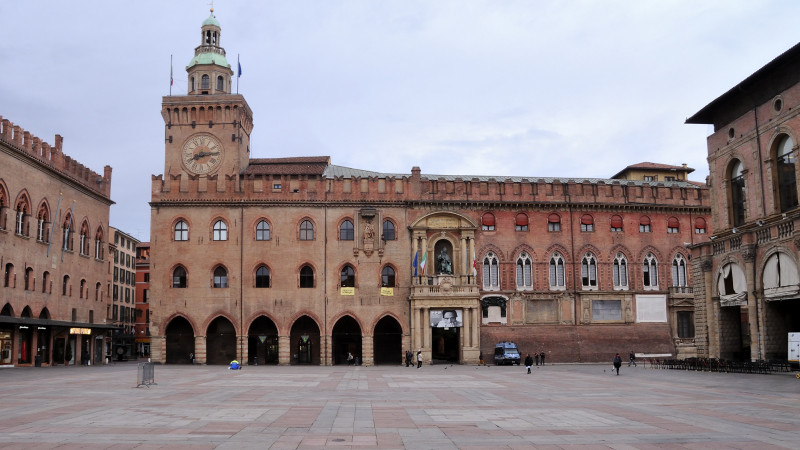Bologna is the capital and largest city of the Emilia-Romagna region in northern Italy and the seventh most populous city in Italy, with approximately 400,000 residents representing 150 nationalities. Its metropolitan area houses over a million people. The city is renowned as the home of the University of Bologna, founded in 1088 AD, making it the oldest university in continuous operation.
1905: Success of Cardinal Lambertini
Since 1905, Alfredo Testoni's play "Cardinal Lambertini" has enjoyed great theatrical success, with subsequent performances on screen by Bolognese actor Gino Cervi.
1909: Foundation of Bologna FC 1909
In 1909, Bologna FC 1909, the city's main football club, was founded.
1928: Foundation of Rugby Bologna 1928
In 1928, Rugby Bologna 1928, one of Italy's oldest rugby union clubs, was founded and became affiliated with the Italian rugby union federation.
1937: Tobacco Manufacturing Plant
In 1937, the Fascist regime poured massive investments into Bologna, for example with the setting up of a giant tobacco manufacturing plant.
July 1943: Aerial Bombardment
On 24 July 1943, a massive aerial bombardment destroyed a significant part of Bologna's historic city centre and killed about 200 people. The main railway station and adjoining areas were severely hit, and 44% of the buildings in the centre were listed as having been destroyed or severely damaged.
1943: City Becomes Key Resistance Center
After the armistice of 1943, Bologna became a key center of the Italian resistance movement.
November 1944: Battle Around Porta Lame
On 7 November 1944, a pitched battle around Porta Lame, waged by partisans of the 7th Brigade of the Gruppi d'Azione Patriottica against Fascist and Nazi occupation forces, did not succeed in triggering a general uprising.
1944: Bombing Damage
Despite having suffered considerable bombing damage in 1944, Bologna's 142 hectares (350 acres) historic centre is Europe's second largest.
April 1945: Liberation of Bologna
On the morning of 21 April 1945, resistance forces entered Bologna. The Germans had largely left the city in the face of the Allied advance, spearheaded by Polish forces advancing from the east during the Battle of Bologna.
1945: Post-War Political Shift
In the post-war years, starting in 1945, Bologna became a political stronghold of the Italian Communist Party.
1955: Founding of SAIS Bologna
In 1955, SAIS Bologna was founded as the first campus of a US post-graduate school to open in Europe, inspired by Marshall Plan efforts.
1961: Climate Normals Reference
Climate normals for the weather station of Bologna Borgo Panigale are for both 1961–1990 periods, in order to highlight changes between the two periods.
1963: Bologna FC Italian League Championship
In 1963, Bologna FC 1909 won an Italian league championship.
1970: Master Plan for New Town
In 1970, the project for a new town north of Bologna from Japanese starchitect Kenzo Tange was evaluated as too ambitious and expensive.
1977: Rioting Linked to the Movement of 1977
In 1977, Bologna was the scene of rioting linked to the Movement of 1977, sparked by the police shooting of Francesco Lorusso.
1978: Construction of New District Begins
At the end of 1978, the construction of a tower block and several diverse buildings and structures started in Bologna.
August 1980: Bologna Massacre
On 2 August 1980, a terrorist bomb was set off in the central railway station of Bologna, killing 85 people and wounding 200, an event known in Italy as the Bologna massacre.
1985: Regional Government Headquarters Move
In 1985, the headquarters of the regional government of Emilia-Romagna moved into the new district.
1985: Seat of the Regional Government
In 1985, the seat of the regional government, a tower complex designed by Japanese architect Kenzo Tange, was established in the Fiera District.
1990: Climate Normals Reference
Climate normals for the weather station of Bologna Borgo Panigale are for both 1961–1990 periods, in order to highlight changes between the two periods.
1991: Climate Normals Reference
Climate normals for the weather station of Bologna Borgo Panigale are for both 1991–2020 periods, in order to highlight changes between the two periods.
1995: Convictions in Bologna Massacre
In 1995, members of the neo-fascist group Nuclei Armati Rivoluzionari were convicted for carrying out the attack, while Licio Gelli was convicted for hampering the investigation of the Bologna massacre.
1995: Direct Elections Since 1995
In 2021, Matteo Lepore became the most voted mayor of Bologna since the introduction of the direct elections in 1995.
1998: Initiation of "Bologna dei Teatri" project
In 1998, the City of Bologna initiated the project "Bologna dei Teatri" (Bologna of the Theatres), an association of the major theatrical facilities in the city.
1999: Uninterrupted Succession of Mayors
Between 1945 and 1999, Bologna was helmed by an uninterrupted succession of mayors from the PCI and its successors.
1999: Fortitudo wins league title
Between 1999 and 2005, Fortitudo won two league titles.
1999: Centre-right mayor election
In 1999, the election of a centre-right mayor ended the city's reputation as a bastion of the Italian Communist Party.
1999: End of Left-Wing Mayors' Tradition
In 1999, the long tradition of left-wing mayors in Bologna was interrupted by the victory of Giorgio Guazzaloca, an independent centre-right candidate.
2000: European Capital of Culture
In 2000, Bologna was declared the European Capital of Culture.
2002: Bologna Population Growth
Between 2002 and 2007, the population of Bologna grew by 0.0 percent.
2004: Centre-Left Victory
In 2004, Sergio Cofferati, a former trade union leader, unseated Giorgio Guazzaloca, reverting Bologna to its left-wing political alignment.
2004: Creation of the Orchestra Mozart
In 2004, the Orchestra Mozart was created; Claudio Abbado was its music director until his death.
2005: Fortitudo wins league title
Between 1999 and 2005, Fortitudo won two league titles.
May 2006: Bologna becomes a UNESCO City of Music
On May 26, 2006, Bologna was designated a UNESCO City of Music, recognized for its rich musical tradition and commitment to promoting music for inclusion and development.
2006: UNESCO "City of Music"
In 2006, Bologna was designated a UNESCO "City of Music" and joined the Creative Cities Network.
2007: Bologna Population Growth
Between 2002 and 2007, the population of Bologna grew by 0.0 percent.
June 2009: Election of Flavio Delbono
Flavio Delbono was elected centre-left mayor of Bologna in June 2009.
2009: European Regional Economic Growth Index
In 2009, the European Regional Economic Growth Index (E-REGI) ranked Bologna as the first Italian city and the 47th European city in terms of economic growth rate.
January 2010: Resignation of Flavio Delbono
In January 2010, the mayor of Bologna, Flavio Delbono, resigned after being involved in a corruption scandal.
February 2012: Snowiest Month
February 2012 was one of the snowiest months of the past decade in Bologna.
2012: TPER Operations
Since 2012, the public bus lines of Bologna, including trolleybus lines, have been operated by Trasporto Passeggeri Emilia-Romagna (TPER).
2014: Rugby Bologna's Status
As of 2014, Rugby Bologna 1928 is Italy's oldest rugby union club still in operation.
2014: Death of Claudio Abbado
In 2014, Claudio Abbado, the music director of the Orchestra Mozart, passed away.
January 2015: Metropolitan Municipality Operative
Since 1 January 2015, the urban area of Bologna is one of the 15 metropolitan municipalities (città metropolitane), new administrative bodies fully operative.
2015: University of Bologna Enrollment
In 2015, the University of Bologna had over 80,000 enrolled students, including many Erasmus, Socrates, and overseas students.
2015: Administrative Reform
In 2015, the municipality of Bologna was subdivided into six administrative boroughs (quartieri), down from the former nine before the 2015 administrative reform.
2016: Bologna Population Statistics
In 2016, Bologna had a population of 388,254 within the city proper, with approximately 1 million residing in the greater Bologna area. The population consisted of 46.7% males and 53.3% females. Minors made up 12.86% of the population, while pensioners accounted for 27.02%. The average age of a Bologna resident was 51.
2016: Merola Confirmed as Mayor
In 2016, Virginio Merola was confirmed as mayor of Bologna, defeating Lucia Borgonzoni.
2017: Bologna Airport Passenger Traffic
In 2017, the Bologna Guglielmo Marconi Airport served 8 million passengers, making it the seventh busiest Italian airport for passenger traffic.
2017: GDP of Metropolitan City
In 2017, the Metropolitan City of Bologna generated a GDP of about €35 billion, equivalent to €34,251 per capita.
2018: Repurposing of Bologna San Donato Classification Yard
Since 2018, the Bologna San Donato classification yard has been repurposed as the Bologna San Donato railway test circuit.
2020: Climate Normals Reference
Climate normals for the weather station of Bologna Borgo Panigale are for both 1991–2020 periods, in order to highlight changes between the two periods.
October 2021: Election of Matteo Lepore
On 4 October 2021, Matteo Lepore (PD) was elected mayor of Bologna with 61.9% of the votes.
October 2021: Matteo Lepore as Metropolitan Mayor
Since 11 October 2021, Matteo Lepore, as mayor of the capital city, has been the mayor of the Metropolitan City of Bologna.
2021: Election of Matteo Lepore
In 2021, after ten years of Virginio Merola's mayorship, Matteo Lepore was elected mayor of Bologna with 61.9% of votes.
2021: UNESCO World Heritage Site
In 2021, the lengthy porticoes of Bologna were recognized by UNESCO as a World Heritage Site.
2022: Il Sole 24 Ore names Bologna the best city in Italy
In 2022, Il Sole 24 Ore named Bologna the best city in Italy for overall quality of life.
May 2023: Bologna Tramway Construction
As of May 2023, the first line of the new Bologna tramway is under construction, with a four-line network planned overall.
2024: Sustainability Investment Program
Bologna is increasing its investment in sustainability as part of a 2022–2024 program that integrates gender perspectives into urban planning, with an emphasis on sustainable mobility, public infrastructure, and green spaces.
2040: Carbon Neutral Target
Bologna intends to become carbon neutral by 2040 and raise female employment rates, focussing on sustainable and equitable urban development.
Mentioned in this timeline
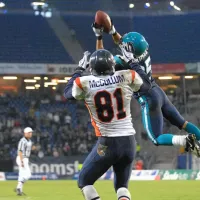
Football is a family of team sports primarily involving kicking...
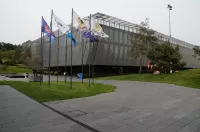
FIFA F d ration Internationale de Football Association is the...
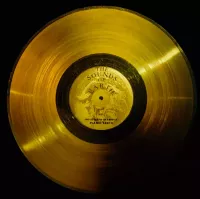
Music is a cultural universal involving the arrangement of sound...
Italy officially the Italian Republic is located in Southern and...
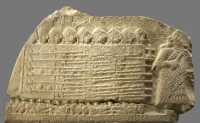
War is defined as an armed conflict involving the organized...
Bologna FC is a professional Italian football club based in...
Trending
8 days ago Jalen Williams' Impact: Thunder, Warriors Matchups, Dort's Future, Injury Return
Keldon Johnson is an American professional basketball player currently playing for the San Antonio Spurs in the NBA Prior to...

6 months ago Brokeback Mountain's 20th Anniversary: Challenging Hollywood and impacting audiences, starring Heath Ledger.

6 months ago Sarah Sherman's SNL Checks Mistakenly Sent to Gilda Radner's Estate: A Sobbing Revelation

Lily Allen is an English singer songwriter and actress known for her distinctive voice and candid lyrics She gained prominence...

8 days ago Jesse Plemons discusses 'Bugonia', Oscar buzz, and career from child actor.
Popular

Candace Owens is an American conservative political commentator and author...

Ilhan Omar is an American politician currently serving as the...

XXXTentacion born Jahseh Dwayne Ricardo Onfroy was a controversial yet...

Tom Cotton is an American politician and Army veteran currently...
The Kennedy Center Honors are annual awards recognizing individuals and...
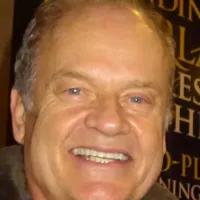
Kelsey Grammer is an accomplished American actor producer and singer...
